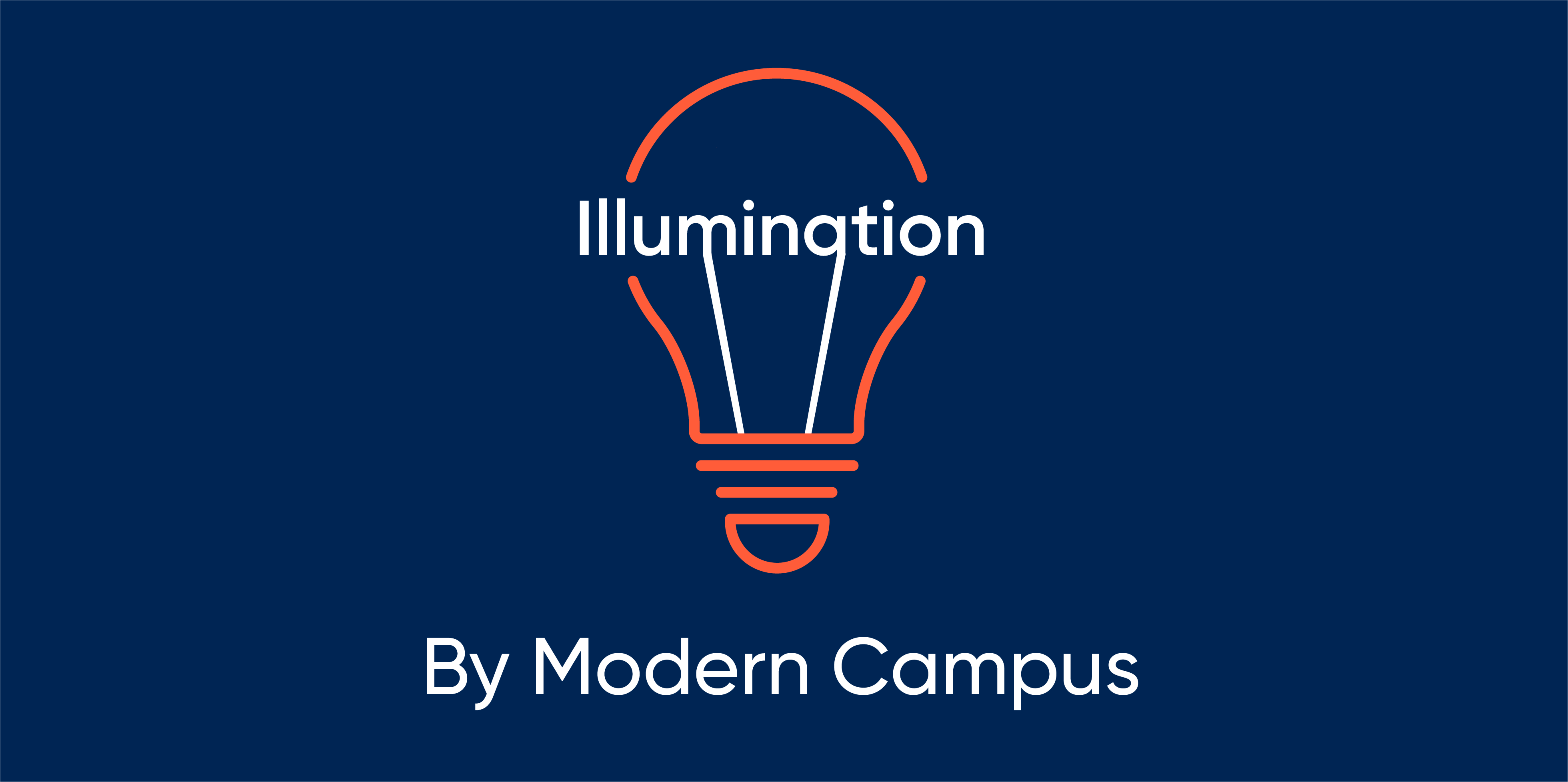Adopting a Collaborative Continuing Education Model

Continuing Education is known to be innovative, responsive and adaptive when it comes to developing and delivering programming—and customer service—for their learners. This is a skill that everyone should adopt.
But oftentimes, they sit on the periphery of the institution…on the outside looking in.
So when they’re pulled closer to the center of strategic decision for the main campus, it sometimes constricts CE’s ability to innovate and deliver the programs that are most needed.
In the sixth episode of Illumination by Modern Campus, Nicole Westrick, Associate Vice Provost at Temple University, highlighted how this limitation requires a shift in current processes.
“Limitation means that sometimes we have to find new ways of operating, new ways of thinking, and that needs to help inform the broader institutions,” she said.
And this shift needs to happen now, as the opportunities to learn are becoming more and more saturated. There are dozens of providers out there creating and marketing the short-term programming modern learners are looking for.
Soon enough, higher ed will be knocked out of the competition. With technology evolving at a rapid pace, jobs requirements are constantly changing and higher ed needs to keep up.
“If we’re not doing that innovation and being responsive to the market, we're not going to be able to meet the needs of our students,” Westrick said.
There is no one-job-for-life model anymore and that means that institutions need to adapt to a lifelong learning model. In this, Continuing Education has an obligation to be the place where learners can come back, earn the credentials they need and continue on their career journey.
In responding to learner needs, many departments and facilities tend to run things independently for simplicity and ability to control what’s being developed. This creates an issue around responsibility-centered management.
Staying in your silo isn’t going to get you far. To be on top of responding to market demand, it requires a lifelong learning approach and collaboration.
“If your college hasn't bought into that continuing ed model, if it's decentralized, you're done. You can't even get your program off the ground,” she said.
A centralized model empowers these new programs to be creative and meet learner needs because the infrastructure and support are in place. There’s a more collaborative approach taking place that allows faculty to stand up, pitch a new idea and get the support that’s needed.
As Westrick points out, a decentralized model is like navigating a maze when it comes to the student experience.
“If you haven't navigated the maze before, you're going to hit a lot of dead ends. And for many students, that first dead end is enough to send them somewhere where it’s easier.” she said.
What’s needed is one registration system that allows students to seamlessly navigate the many different schools and colleges that are a part of an institution. This helps meet the needs of lifelong learners who will be looking to enter higher ed at different stages of their lives.
“For better or worse, higher education has been synonymous with employment and employment outcome is part of the driver,” Westrick said.
It’s important for institutions to find more ways to serve adults and allow access to pathways for working professionals and build those on- and off-ramps.
But before implementing a more centralized approach with non-degree education, you have to start with the pain points.
“If the biggest unit has that pain point, then the smaller units definitely have that pain point,” she said.
To get over these pain points, it requires an investment in tools, like learning management systems, that are unique to a continuing ed unit. When you start moving towards that centralized model, that’s when things work in tandem.
“Once you solve a problem, there's trust, and then you can really start to build those synergies across programs,” she said.
It’s not a competition among units. Instead, it’s about tailoring offerings and models that work for each student demographic the institution serves.
By running simultaneously through the right systems, Continuing Ed and the broader institution can work together to focus on what matters most. This will improve processes and create an experience that will stand out to learners.
“It’s about being student-centric,” she said. “There's lots of value in taking that empathetic approach of what it’s like to be a student today.”
Full Episode
Last updated: August 13, 2021


